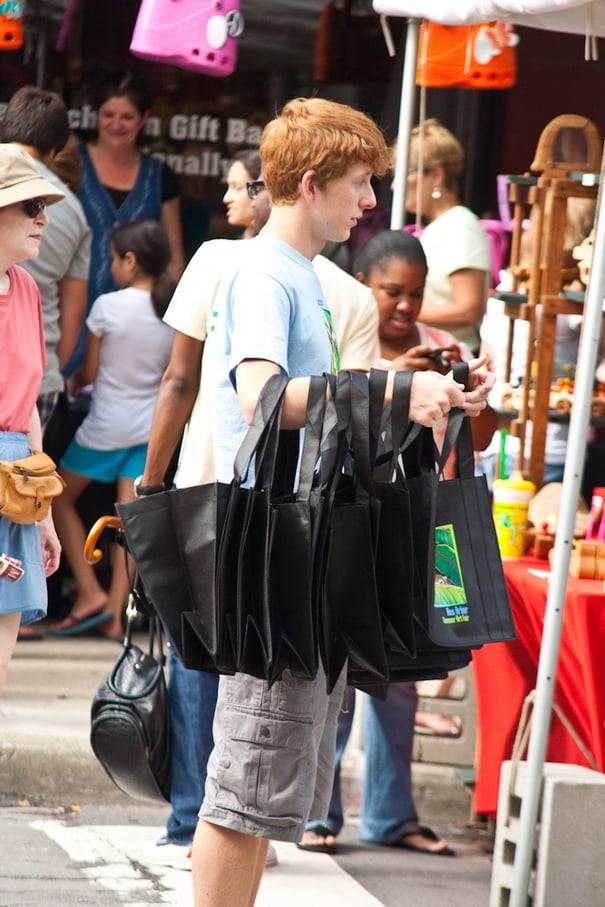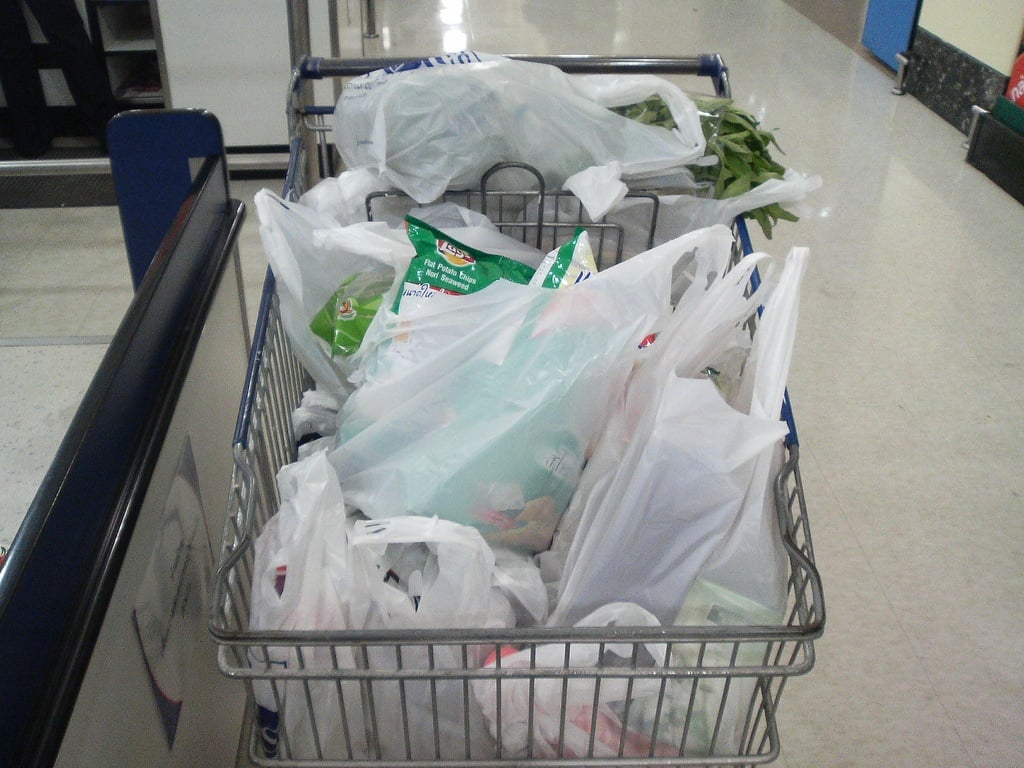Do you know how many plastic bags you use every year? Well, for the average American family it’s about 1,500—in California, where voters just upheld a ban on single-use plastic bags, that amounted to about 15 billion plastic bags each year. Supporters of the ban charged that plastic bags were wasteful and polluted cities, waterways, and oceans. Now, with election season over, grocery stores have already started to implement the law, refusing to provide customers with plastic bags and charging them for reusable alternatives. Grocers, manufacturers, and consumers are all adjusting to the change and also looking outside the state to see if this is merely a rare coastal exception or the beginning of a broader trend.
And San Francisco Shall Lead the Way
First, some background on the California plastic bag ban. In 2007, San Francisco became the first city to ban single-use plastic bags. Other cities followed and, in 2014, the California State Legislature passed and the governor signed SB 270 prohibiting the bags statewide. Plastic bag manufacturers successfully challenged the bill and put it up to a referendum vote, temporarily stalling the legislation until election season. They were, however, ultimately unsuccessful as voters upheld the ban. Now, seemingly overnight, over 22 million Californians will no longer be offered complimentary plastic bags at their local grocery stores (the remaining 17 million already lived in cities/counties with bans in place).
Grocery stores, for the most part, have supported the policy, seeing it as the end to a patchwork system of local restrictions across the state, and further seeing sales opportunities. The spokesman for the California Grocers Association appreciates the consistency: “Most retailers have stores in multiple counties, so rather than have retailers have to figure out whether to send plastic bags here or paper there, this makes it more consistent.”
While a majority of voters approved the ban, there remains an angry minority of consumers who have proven quite displeased. “I think it’s ridiculous,” said one southern-California shopper. “I think for people that are middle class, I don’t think it’s right. We pay a good amount of taxes as it is. We shouldn’t be getting charged for stupid, petty things like that. It’s just not fair.” This sentiment appears to be popular—one anonymous cashier said the transition had been tough: “It involves a lot of cussing. They’re not taking it very well.”
Paper or…Paper?
Here’s how the law works: Pharmacies, grocers, corner markets, and liquor stores are prohibited from offering single-use plastic bags (violations can result in fines of up to $1,000/day) and, in cases where customers show up to the store sans bags, must charge them a minimum of ten cents for a paper or otherwise reusable bag. The ten-cent fee, ostensibly designed to encourage consumers to remember to bring their own bags, is a minimum guideline that stores are free to exceed, and the revenue from bag sales goes directly to the store to cover the “cost of implementation.”

Of course, with such an opportunity stores are not merely peddling $.10 paper bags but instead are offering a wide range of bagging options—Trader Joe’s, for example, offers a basic reusable plastic bag for $.99 but also offers an insulated, zipper-sealed super bag for $6.00. Similarly, Albertsons already sells canvas bags at $2.00 each. According to their spokesperson, “We are focused on helping our customers making this transition, which includes providing them with a wide variety of options to choose from.”
Reform, but for Whom?
But not everybody sees it this way. Lee Califf, the executive director of the American Progressive Bag Alliance, fears something a bit more sinister is afoot, calling the law a “backroom deal between the California Grocers Association and their union friends to scam consumers out of billions of dollars in bag fees—all under the guise of environmentalism.”
Opponents of the ban further charge that the law disproportionately targets middle- and working-class consumers who will repeatedly pay fees when they cannot afford to invest in reusable bags, that it depletes local manufacturing employment opportunities, and that the fees do not even go to rehabilitate the environment the bill alleges to protect. And, there remain questions about whether the ban will actually reduce California’s plastic usage.
About 97% of political contributions opposing the restriction came from out-of-state plastics manufacturers, yet interestingly their campaign efforts ceased after successfully putting the ban on the referendum ballot. This, according to the Sacramento Bee, means that the referendum was likely a ploy to postpone the law, buying time to sell more bags—up to $20 million worth over the interim two years—and make plans for the future.
The Future is in the Bag
With other states including Massachusetts, New York, and Washington all considering similar legislation, such planning does indeed seem prudent.
One manufacturer may already have this one in the bag, however. Command Packaging recently opened a plant that converts agricultural plastics into resin to make reusable plastic grocery bags that comply with the new laws. While grocery bags currently only make up 15% of their business at most, by thinking one step ahead and anticipating the ban, they expect that number to increase to upwards of 25%. “We knew we couldn’t just be making bags and thinking that would be OK long-term,” their marketing director said. “We needed to figure out a way to be sustainable.” 

